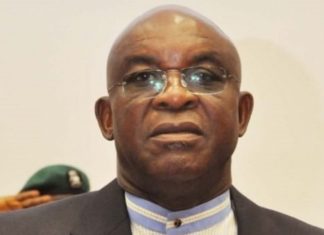Inflation management in Nigeria: demand-pull v cost-push inflation
By Tiko Okoye
- This article was written in September last year. 12 months later, things seem to have taken a turn for the worse. Within this period, an ill-conceived naira redesign scheme was very poorly implemented and the much-anticipated 2023 general elections have been conducted. But against all expectations at the point of formulating policies, the economy is in an inflationary spiral that has defied series hikes in interest rates by the Monetary Policy Committee, principally as result of quantum leaps in food and fuel prices coupled with floating of the naira. This article is being republished in the light of President Bola Tinubu’s recently-released economic agenda and the presidential directive to the CBN management to adopt measures to rein in the naira’s oscillation.
Economic data for August 2022 recently released by the National Bureau of Statistics (NBS) shows, among other things, that Nigeria’s headline inflation rate rose year-to-year-end by a whopping 345 basis points to 20.52% from 17.07% as at August 2021. On a month-by-month basis, inflation increased by 88 basis points when compared against 19.64% in July 2022. It also certainly didn’t help that the current inflation is the highest over a 17-year period dating all the way back to August 2005!
Arising from its meeting on the 26th and 27th of September, the Monetary Policy Committee (MPC) released a communique that emphasized the imperative of taking cognizance of “the aggressive acceleration of inflation globally and how this had begun to retard growth in both advanced and emerging market economies.”
Given the foregoing mind-set and the prospects of “the build-up of increased spending and demand for money, as the 2023 general elections approach” with the likely adverse impact of such an ‘excessive’ money supply within the system, MPC members became fully persuaded that a great necessity was laid on them to wrestle the hydra-headed monster of inflation either to a pin fall or outright submission.
And the way forward for the MPC is to raise both the CBN bellwether Monetary Policy Rate (MPR) from 14% to 15.5% and Cash Reserve Ratio from 27.5% to 32.5%. But would they crystallize the desired effects? I hardly think so.
A perusal of past communiques issued at the last five or so meetings since January 2022 is proof that the MPC has been sounding very much like a broken record by regurgitating the very same jeremiad: “The downward trend in global recovery aggravated by supply chain disruptions as a result of the Russia-Ukraine conflict and spillbacks and spillovers from sanctions imposed on Russia by the US and its allies (and exacerbated by) an unprecedented rise and widespread global inflation which is (further thrusting) downward pressure on the fragile recovery of the global economy (amidst) lingering headwinds associated with the COVID-19 pandemic.”
READ ALSO: Headline Inflation soars to 24.08% in July, as food inflation jumps to 26.98%
The MPR has risen by a whopping 400 basis points between January and September (from 11.5% to 15.5%). Surely, if the same scenarios are still playing out today as nine months back, despite interest rate hikes, why still remain hell-bent on using the same tactic and expecting a different outcome? It clearly seems to me that what is missing here is the ability for creativity or the capacity to think out of the box.
It should also be noted that in virtually all its communiques, the MPC acknowledges that “the tightening of global financial conditions is expected to heighten investment and debt default risks, leading to the likelihood of a broad economic slowdown.” So, why then adopt the very same measures self-predicted to produce these deleterious effects on the economy? Is the MPC implying that its fear of an inflationary spiral is far greater than that of the full ramifications of a broad economic melt-down?
The apex bank is right to worry about a negative interest rate gap that acts as a daunting disincentive to savings/local investment and foreign domestic investment inflows as per the Fisher Effect. But I’m fully persuaded that the CBN is going about the matter the very wrong way. Surely, the CBN isn’t trying to tell us that the MPR – the interest rate it charges deposit money banks which need temporary funding bailout – is the same as the ‘nominal interest rate.’ No way, Jose!
It is the composite prime lending rate (PLR) – the rate at which financial institutions lend to their blue chip clients that actually approximates to the nominal interest rate – and this figure is way higher than the inflation rate in normal times, meaning that a positive real interest – as against a purported negative real interest – gap is already inbuilt. The major factor militating against the growth of longer-term savings and FDI inflows is the fixing of absurdly low interest rates on these instruments from a purchasing power parity perspective.
Imagine a typical bank charging PLR-plus-a risk premium to give an all-in-rate not usually lower than 25% on a 12-month credit facility, and then turning around to offer a take-it-or-leave-it 3% on a 12-month fixed deposit! The onus lies on the CBN to do much more in this regard.
As far as I can see, the recent tight monetary policy being implemented by the apex bank would produce the following adverse effects: Further weakening of the value of the naira with its concomitant effect of pressuring costs of imports up; hike in proportion of households living below the UN-prescribed threshold of $2/day, thereby unravelling virtually all the gains laboriously achieved by a plethora of poverty-alleviation initiatives over the past few years; and unemployment rate to hit new highs.
Others include: Bearish equities market to be considerably matched by a bullish bond market – mainly government development bond stocks – that would further skyrocket interest rates; an obliterated manufacturing sector; stomping the high-flying MSME sector; increasing loan defaults, ballooning non-performing loan portfolios and rendering many financial institutions unable to pass the stress test; and downward revision of projected GDP.
It’s quite true that inflation is most commonly defined as “too much money pursuing too few goods.” This is technically known as demand-pull inflation caused by market forces of supply and demand. The MPC’s restrictive money policy is geared towards curtailing pent-up demand so a lower new equilibrium point can be attained at a reduced supply level and price.
But there’s equally another important type of inflation called cost-push inflation, where prices of goods and services generally rise or fall in tandem with production costs. This is really the type of inflation that afflicts the Nigerian economy as practically every item is imported from abroad. For example, we are the only OPEC member-state that imports all its refined petroleum products since all four refineries have long packed up, hence the economy continues to haemorrhage from unsustainable ‘fuel subsidies.’
But since politicians typically lack the political will to make very unpopular decisions, the CBN has become a milch cow for funding the government’s extravagance but a Scrooge determined to defund hard-pressed businesses and households finds by implementing a restrictive monetary policy to rein in inflation by hiking interest rates.
Unfortunately, even the export manufacturing/processing sector that would’ve benefited most from the accompanying depreciation of the naira is practically non-existent. The Nigerian economy gains little or nothing from this kind of stimulus by being so heavily import-dependent. If only we haven’t been paying mere lip service to the ECOWAS Treaty on Trade and the African Continental Free Trade Agreement.
It is therefore imperative that the thrust of inflation management be shifted from demand-pull to cost-push. There’s the crying need to focus on significantly diversifying the nation’s revenue base, with emphasis on services and manufacturing-cum-agricultural processing as well as promoting an import-substitution economic development agenda.
Fanning the embers of sectional entitlement and marginalisation and constricting consumer demand by ratcheting up unemployment and business-failure rates are two common contraindications of a restrictive monetary policy. It is, therefore, imperative that unlocking access to credit at affordable pricing becomes the centrepiece of the MPC’s expansionist monetary policy, with the sole aim of fostering the baking of a much bigger national cake that would guarantee a bigger slice for each stakeholder in the commonwealth.
Truth be told, just as it is impossible for a man to successfully make a snap with only the middle finger, the CBN should desist from becoming all things to all people and just focus on its core statutory mandate. Many of its existing interventions are fiscal in nature and ought to be embarked upon by the Presidency that actually is the complementary thumb the apex bank sorely needs to work out what’s in the best interests of the Nigerian economy.
I can unequivocally state without fear or favour that just as with dispensing errors in medical practice, the CBN, in the matter of inflation management, steadfastly continues not only dispensing an incorrect medication, dosage strength or dosage form, it is also incredibly failing to appropriately identify policy interactions or contraindications. It’s indeed a miracle that the economy hasn’t been rendered totally comatose over the years more by the prescribed remedies than the actual disease!














